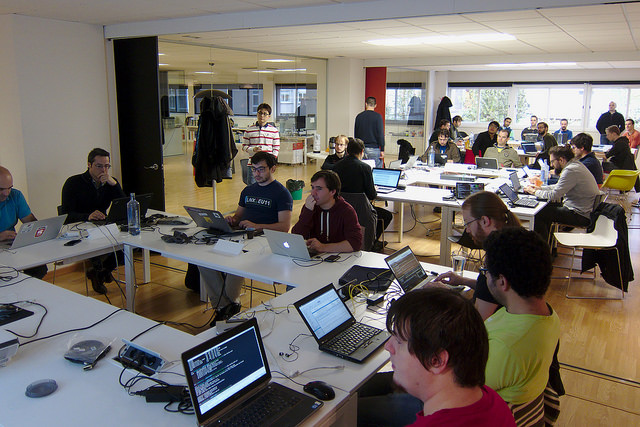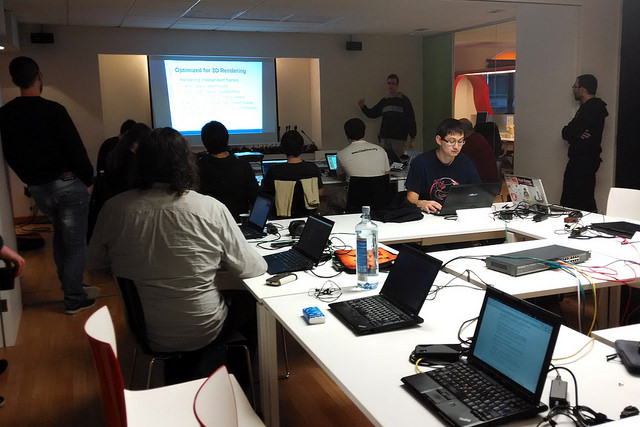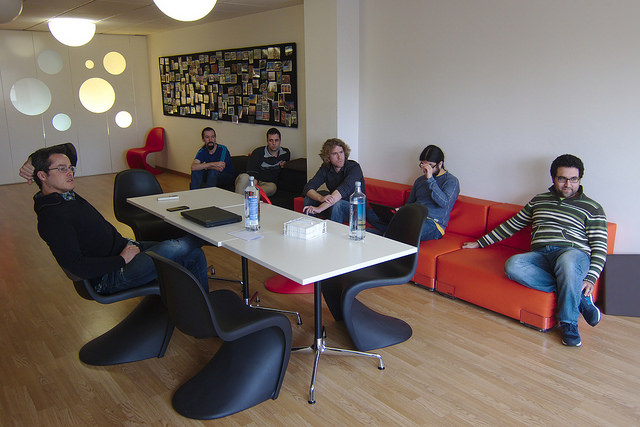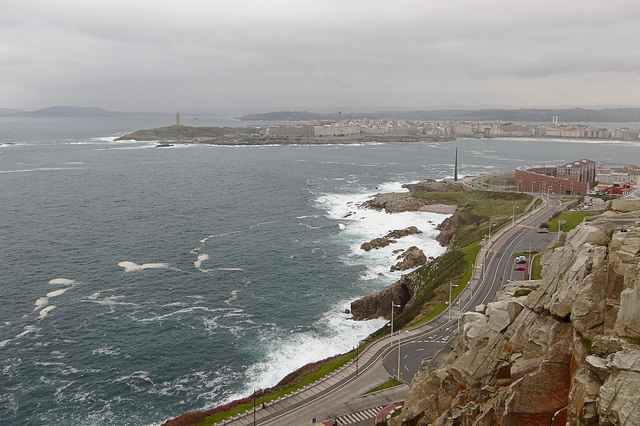Web Engines Hackfest 2014
The Hackfest
 Web Engines Hackfest 2014 (picture by Adrián Pérez)
Web Engines Hackfest 2014 (picture by Adrián Pérez)
Today we’re finishing the first edition of the Web Engines Hackfest. This is like the continuation of the “WebKitGTK+ Hackfest” that has been organized by Igalia since 2009.
Checking some numbers, we’ve been 30 people working together for 4 full-days (even nights in some cases). On top of that, there’ve been 6 nice talks and several interesting discussions around the open web platform.
As usual the hackfest started with an initial brainstorming where everybody introduced themselves and their plans for the following days. Martin Robinson led the discussion and identified the main topics, that were later debated in detail on the breakout sessions.
The Talks
Despite of being an un-conference format event, this year we’ve arranged a few nice talks about different topics (you can find the slides in the hackfest wiki page):
- Raspberry Pi Browser by Gustavo Noronha & ChangSeok Oh: They talked about the work done to have a full-browser working in a low specs device like the RPi. They used WebKitGTK+, but not WebKit2 yet, and they need to do some cool tricks to avoid the hardware limitations.
- CSS Grid Layout by Sergio Villar: Sergio explained the work we’ve been doing around CSS Grid Layout on Blink and WebKit. Apart from explaining some of the nice things of the feature, he revealed our plans to ship it on Chrome during the first quarter of 2015.
- State of JS Implementations by Andy Wingo: As usual a great talk by Wingo summarizing the evolution of JavaScript during the last years in the open source engines (JSC, SpiderMonkey and V8) and what we can expect in the future. Next year we’ll bring us further optimizations and a faster web for the users.
 TyGL presentation by Zoltán Herczeg (picture by Adrián Pérez)
TyGL presentation by Zoltán Herczeg (picture by Adrián Pérez)
- GPU Based 2D Rendering With TyGL by Zoltán Herczeg: Good introduction to TyGL port explaining all the internals and architecture. The different technical challenges and the solutions provided by TyGL to face them.
- WebKit for Wayland by Žan Doberšek: Žan presented a new WebKit port for Wayland platform. The main use case for this port is to have a just one web view full-screen (like in a set top box). He explained the internal details and how it’s done the integration with Wayland.
- A Short Introduction to Servo by Martin Robinson: Martin explained the new parallel browser engine Servo and the Rust programming language behind the scenes. He talked about the current status and the next steps, it should be soon in dog-foodable state.
 CSS Features breakout session (picture by Adrián Pérez)
CSS Features breakout session (picture by Adrián Pérez)
My personal experience
From the personal point of view, I’ve been mostly focused on CSS stuff. We’ve a nice discussing regarding the new layout models (from multi-column, flexbox and grid to regions and shapes) and how long they take to be a major feature widely used on the web.
On the one hand, I’ve been carrying on with the regular work I’m lately doing related to CSS Grid Layout. I found and fixed a crash in the absolutely positioned grid children support that landed past week. In addition I managed to get few more tests landed on the grid W3C test suite that we’re starting to create (thanks to Gérard Talbot for the reviews).
 A Coruña from San Pedro (picture by Adrián Pérez)
A Coruña from San Pedro (picture by Adrián Pérez)
On the other hand, I’ve been talking with Mihnea Ovidenie about CSS Regions and how CSS Grid Layout could help to avoid the criticism regarding empty HTML elements required to create regions.
Grid allows you to divide the webpage in areas directly from CSS, each area is not associated with an HTML element (a DOM node). So if regions are defined using those areas, it won’t be needed to create empty elements on the DOM tree.
Basically, this seems to match with what is defined in the CSS Pagination Templates module that is being drafted by Alan Stearns.
Thanks
Finally I’d like to thanks to all the people attending (this event wouldn’t be possible without all of you). We hope you enjoined the hackfest and also your stay in A Coruña. See you next year!
 Web Engines Hackfest 2014 sponsors: Adobe, Collabora and Igalia
Web Engines Hackfest 2014 sponsors: Adobe, Collabora and Igalia
Also big thanks the sponsors Adobe, Collabora and Igalia for making possible such a great event.
- Previous: Short 1
- Next: Short 2014-12-10